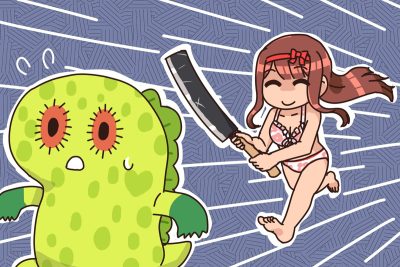This is really a first-impression piece. I’m talking about my own impression but more like how a nice meal tastes, but with the right wine pairing.

You can now catch the TV anime streaming on Crunchy, after I guess some kind of exclusivity period. I would think none of this matters given how the entire series was pre-screened in theaters in Japan already. I have this story in which I could have caught the first segment during ML10th Act3 in Fukuoka, but time didn’t allow, and due to some snafu of not his own making, my hotel roommate during that weekender wasn’t able to see the show on day one. Instead, he went to catch this pre-screening.
Here are what I think are the relevant “filters” coloring my experience after 1 episode in, some personal biases if you will. In the interest of time I’ll just bullet them.
- Miriani. Everyone likes to compare children of the same family, and while I am not any less guilty of this, I don’t really think about it. Rather, it’s an unconscious effect where before seeing the show I can see how people make these plot, writing or direction comparisons and it makes sense (to support their points about one being better or worse than the other). Or rather, Miriani is unimpeachable? I don’t think it’s that good (but I don’t 100% agree with those hankering for the A-1 days, FWIW) in the grand scheme of things, and after seeing Shinyani I don’t think it’s as bad as people make it out to be, if comparing it to Miriani is something that happens either consciously or not. Ultimately, Shinyani is not some 10-years-worth of tears pouring into something or another, like Miriani was–that is more like pulling teeth since 2015, for an anime that would have been better suited in 2018. I guess this means I’m consciously ignoring that obvious comparison.
- Visual novel anime titles from the 00s. There is one specific title I have in mind, which is one of my all-time faves. That title, ef, is taking the same vibe in which we are telling a story, mostly not with plot, but with vibes, or whatever vibes were called in the 2000s. It’s a common focus in many postmodern narratives, and visual novels tend to have this going on back when. Visual novel anime basically derives, in a figurative-mathematical sense of the term, the same feelings and storytelling techniques, in order to express emotions. I don’t know how well Shinyani will carry this concept that the OG Shinymas game kind of prides itself on, but I guess we’ll see. Generally though this takes a lot of time, and Shinyani has to deal with a lot of idols in a cour, so it’s probably not going to be a strong point. Anyways, all throughout episode one, I think of the sky, the feathered wing, the scene as set by the rhythm of the sun (note all the sunset scenes…), and all colored by simple piano chords. This is EF.
- Gakumas visuals. I realized my impression of the Shinyani visuals before Gakuen IDOLM@STER is different than after Gakumas. In fact that realization prompted this post. Looping Rinami’s 4K intro clip countless time probably made me even more damaged than I was? Joke aside, this is because the IM@S 3D art style has shifted. I would say this is also kind of a subconscious impact of Miriani, in which we are now in a new territory where the A1-licensed artwork is ancient history, that MLTD is kind of a transitional visual artifact, almost, and Gakumas is the future. Or the present. Shinyani actually pairs well with the graphics coming out from those brave folks at QualiArts. I mean, when I saw this unveiled, it reminds me of someone saying something about courage.
- Who I am as a Shinymas Producer. As someone who dips in and out of Shinymas game-wise, I’m really following it for the overall meta-story, the fandom, the songs, and the performances. Having been with the franchise since the start I know what I’m looking forward to, to put it in the same like as Gakumas as we’re doing weekly new-character-reveals, the overall progression of the franchise as new units are added to the series. The anime is not something I’m dying for–it’s clearly an onboarding for the payday pinata that is the Shinysong game that launched just months earlier. That reminds me, I should write something about it… but I guess you can guess how I feel about that game. Anyways, Your Mileage Will Vary here because I’m not sure how big my cohort size really is–probably not that much in the English-language speaking sphere.
So far, the anime is at least good enough to carry on the branding of IDOLM@STER from a production point of view. I’m not really sure how the story will take its turn at the end of the season, as they have announced S2 (completely with at least Straylight and Noctchill), but are they going to “progress” at that point on? I assume so. To say it feels kind of bad to announce and tease the new units of S2 before S1 even aired is putting it mildly. Unfortunately, speedy is the Otaku’s Sword of Judgment, errors and nuances be damned, and we know the cohort that knows Shinymas purely from zako illustrators on the internet and erodojinshi is much larger than the cohort for me, LOL. Anyways, I guess I’ll continue to watch this show, as if I had any other choice.



